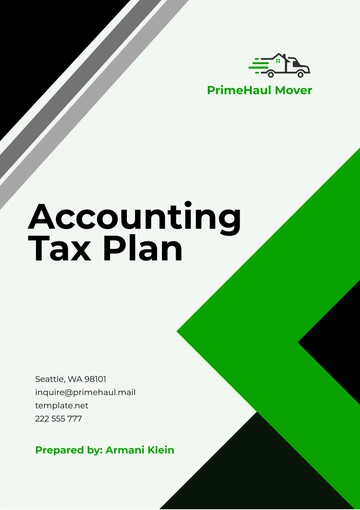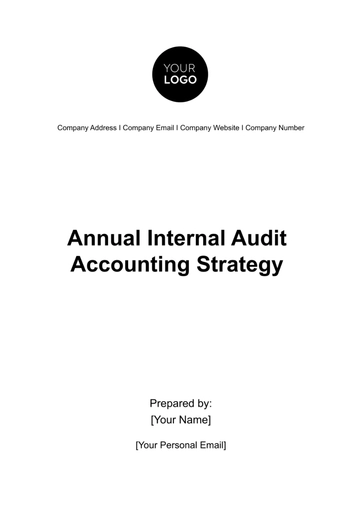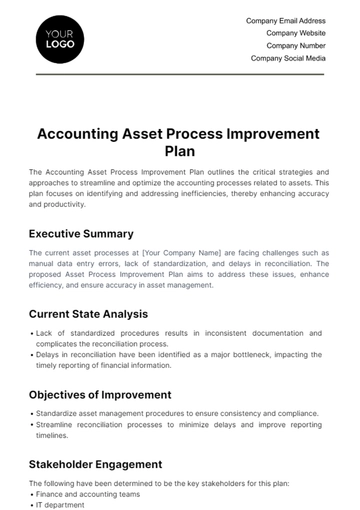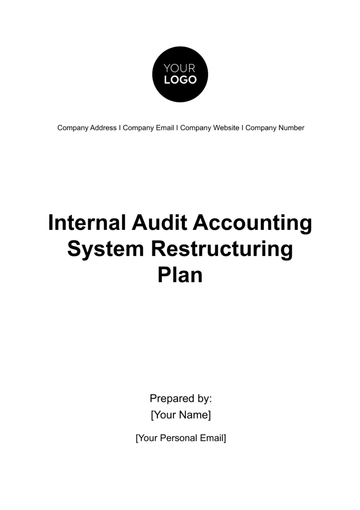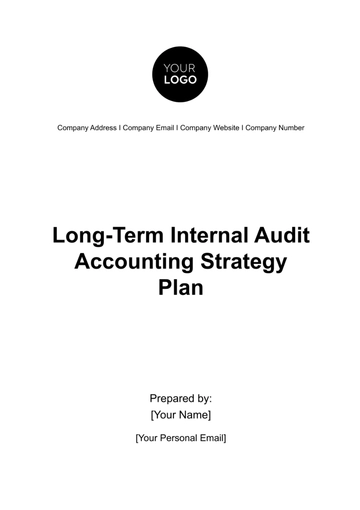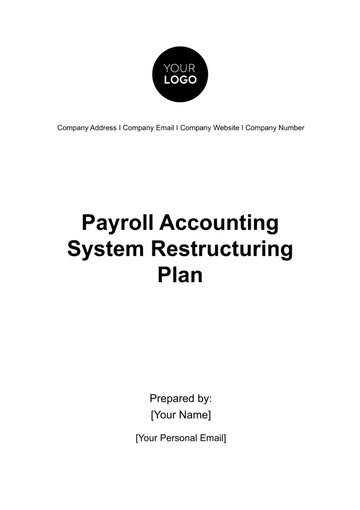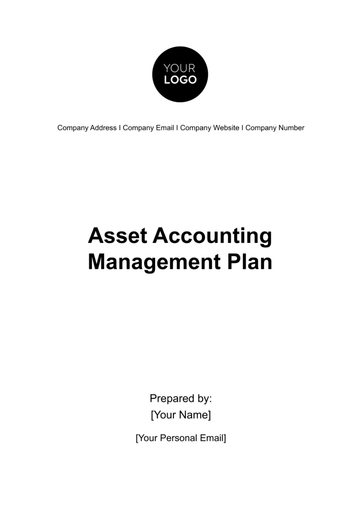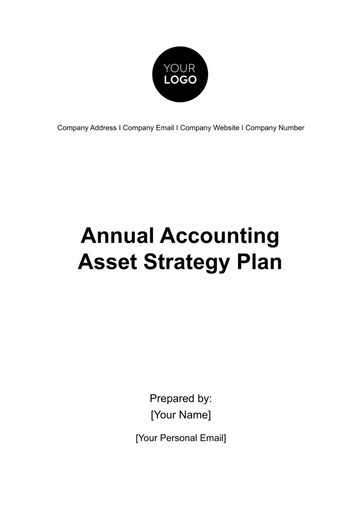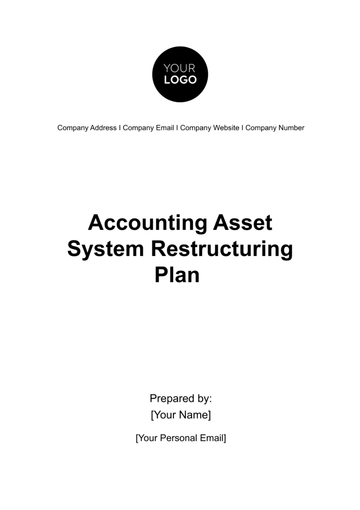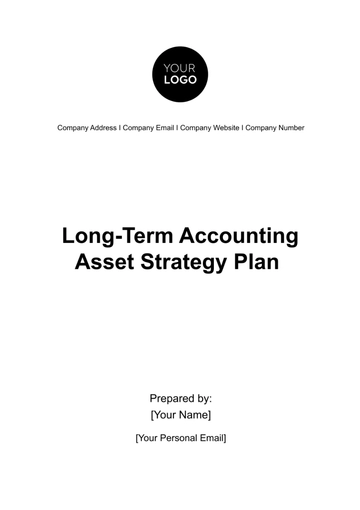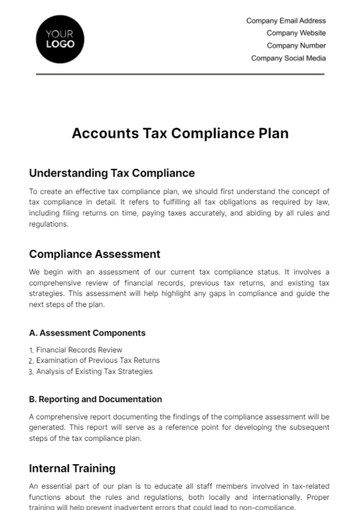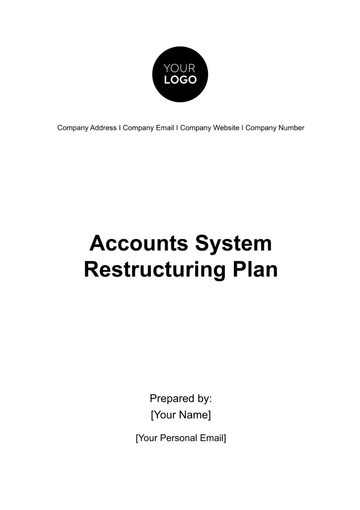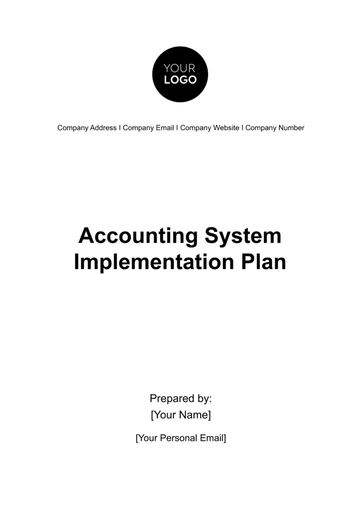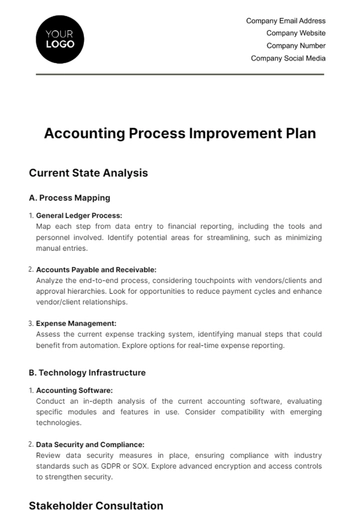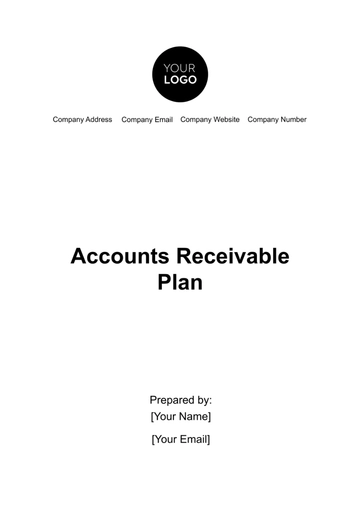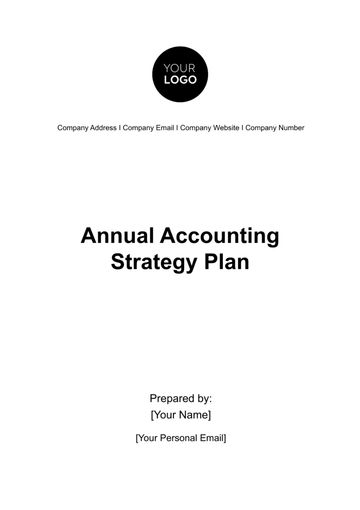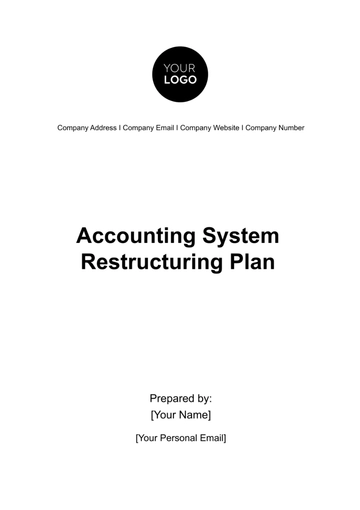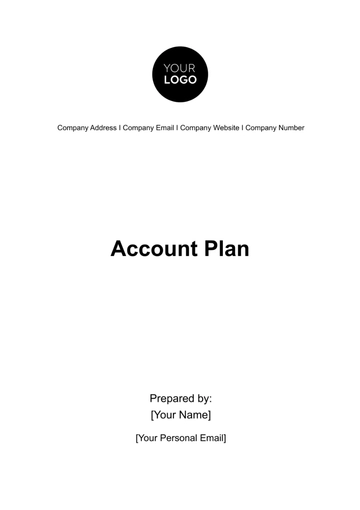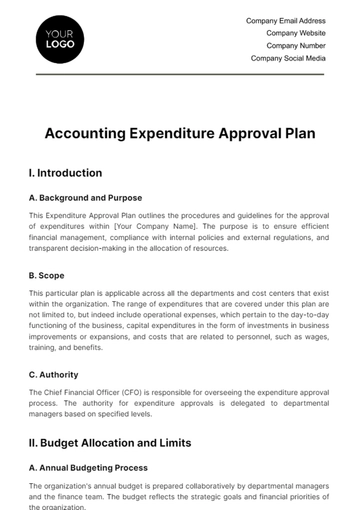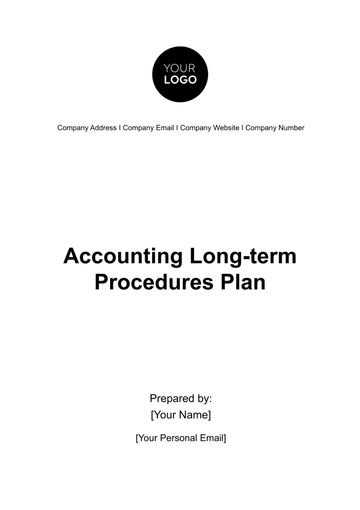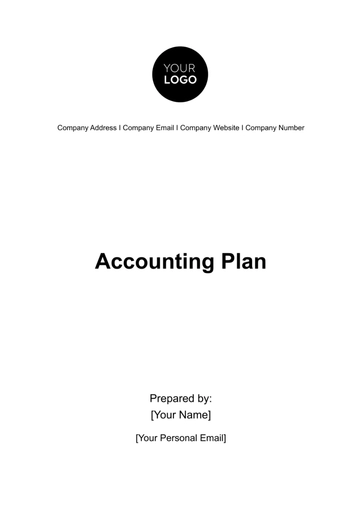Free Accounting Asset Process Improvement Plan

The Accounting Asset Process Improvement Plan outlines the critical strategies and approaches to streamline and optimize the accounting processes related to assets. This plan focuses on identifying and addressing inefficiencies, thereby enhancing accuracy and productivity.
Executive Summary
The current asset processes at [Your Company Name] are facing challenges such as manual data entry errors, lack of standardization, and delays in reconciliation. The proposed Asset Process Improvement Plan aims to address these issues, enhance efficiency, and ensure accuracy in asset management.
Current State Analysis
Lack of standardized procedures results in inconsistent documentation and complicates the reconciliation process.
Delays in reconciliation have been identified as a major bottleneck, impacting the timely reporting of financial information.
Objectives of Improvement
Standardize asset management procedures to ensure consistency and compliance.
Streamline reconciliation processes to minimize delays and improve reporting timelines.
Stakeholder Engagement
The following have been determined to be the key stakeholders for this plan:
Finance and accounting teams
IT department
Department heads responsible for asset management.
In addition to determining stakeholders, regular meetings and feedback sessions will be organized to ensure all stakeholders are actively involved and aligned with the improvement objectives.
Proposed Changes
Here are the proposed changes of this plan:
Implement automated data entry tools to reduce manual errors.
Introduce standardized asset documentation templates and guidelines.
Utilize a centralized platform for real-time tracking and reconciliation of assets.
Staff Training and Upskilling
For effective application of new methodologies and technology, it's absolutely necessary that our staff members acquire the appropriate training and skills. This requirement necessitates a committed focus on regular training sessions, which will provide the required knowledge and proficiency to our accounting team. With such a system in place, the company can guarantee that they will become proficient in the optimum utilization of the latest systems. This process ensures that they have the most current and efficient tools at their disposal to realize the maximum potential of the systems in place.
Technology Integration
Integrate an advanced accounting software system to automate data entry and reconciliation processes.
Provide training sessions to familiarize employees with the new technology and its features.
Performance Metrics and Monitoring
The following Key Performance Indicators (KPIs) have been determined (but are not limited to):
the percentage reduction in manual errors
adherence to standardized procedures
improvements in reconciliation timelines.
Additionally, monthly evaluations will be conducted to track progress and identify areas for further refinement.
Implementation Timeline
Phase 1 (Months 1-2): Implement automated data entry tools.
Phase 2 (Months 3-4): Introduce standardized documentation procedures.
Phase 3 (Months 5-6): Launch the new accounting software and monitor its effectiveness.
Regulatory Compliance Enhancement
Regulatory compliance is paramount in accounting. The asset accounting process will be aligned with the latest regulations and changes, ensuring compliance and reducing the risk of violations.
Conclusion
The Asset Process Improvement Plan represents a strategic initiative to enhance accuracy, efficiency, and transparency in the company's asset management processes. It also helps us become more committed to continuous improvement and ensuring a seamless transition to the optimized asset management framework.
- 100% Customizable, free editor
- Access 1 Million+ Templates, photo’s & graphics
- Download or share as a template
- Click and replace photos, graphics, text, backgrounds
- Resize, crop, AI write & more
- Access advanced editor
Revolutionize your accounting with Template.net's Editable and Customizable Accounting Asset Process Improvement Plan Template. Tailor it to your needs effortlessly since it is also editable in our AI Editor Tool. Streamline workflows, reduce errors, and boost efficiency with this comprehensive template designed to elevate your asset management processes.
You may also like
- Finance Plan
- Construction Plan
- Sales Plan
- Development Plan
- Career Plan
- Budget Plan
- HR Plan
- Education Plan
- Transition Plan
- Work Plan
- Training Plan
- Communication Plan
- Operation Plan
- Health And Safety Plan
- Strategy Plan
- Professional Development Plan
- Advertising Plan
- Risk Management Plan
- Restaurant Plan
- School Plan
- Nursing Home Patient Care Plan
- Nursing Care Plan
- Plan Event
- Startup Plan
- Social Media Plan
- Staffing Plan
- Annual Plan
- Content Plan
- Payment Plan
- Implementation Plan
- Hotel Plan
- Workout Plan
- Accounting Plan
- Campaign Plan
- Essay Plan
- 30 60 90 Day Plan
- Research Plan
- Recruitment Plan
- 90 Day Plan
- Quarterly Plan
- Emergency Plan
- 5 Year Plan
- Gym Plan
- Personal Plan
- IT and Software Plan
- Treatment Plan
- Real Estate Plan
- Law Firm Plan
- Healthcare Plan
- Improvement Plan
- Media Plan
- 5 Year Business Plan
- Learning Plan
- Marketing Campaign Plan
- Travel Agency Plan
- Cleaning Services Plan
- Interior Design Plan
- Performance Plan
- PR Plan
- Birth Plan
- Life Plan
- SEO Plan
- Disaster Recovery Plan
- Continuity Plan
- Launch Plan
- Legal Plan
- Behavior Plan
- Performance Improvement Plan
- Salon Plan
- Security Plan
- Security Management Plan
- Employee Development Plan
- Quality Plan
- Service Improvement Plan
- Growth Plan
- Incident Response Plan
- Basketball Plan
- Emergency Action Plan
- Product Launch Plan
- Spa Plan
- Employee Training Plan
- Data Analysis Plan
- Employee Action Plan
- Territory Plan
- Audit Plan
- Classroom Plan
- Activity Plan
- Parenting Plan
- Care Plan
- Project Execution Plan
- Exercise Plan
- Internship Plan
- Software Development Plan
- Continuous Improvement Plan
- Leave Plan
- 90 Day Sales Plan
- Advertising Agency Plan
- Employee Transition Plan
- Smart Action Plan
- Workplace Safety Plan
- Behavior Change Plan
- Contingency Plan
- Continuity of Operations Plan
- Health Plan
- Quality Control Plan
- Self Plan
- Sports Development Plan
- Change Management Plan
- Ecommerce Plan
- Personal Financial Plan
- Process Improvement Plan
- 30-60-90 Day Sales Plan
- Crisis Management Plan
- Engagement Plan
- Execution Plan
- Pandemic Plan
- Quality Assurance Plan
- Service Continuity Plan
- Agile Project Plan
- Fundraising Plan
- Job Transition Plan
- Asset Maintenance Plan
- Maintenance Plan
- Software Test Plan
- Staff Training and Development Plan
- 3 Year Plan
- Brand Activation Plan
- Release Plan
- Resource Plan
- Risk Mitigation Plan
- Teacher Plan
- 30 60 90 Day Plan for New Manager
- Food Safety Plan
- Food Truck Plan
- Hiring Plan
- Quality Management Plan
- Wellness Plan
- Behavior Intervention Plan
- Bonus Plan
- Investment Plan
- Maternity Leave Plan
- Pandemic Response Plan
- Succession Planning
- Coaching Plan
- Configuration Management Plan
- Remote Work Plan
- Self Care Plan
- Teaching Plan
- 100-Day Plan
- HACCP Plan
- Student Plan
- Sustainability Plan
- 30 60 90 Day Plan for Interview
- Access Plan
- Site Specific Safety Plan
